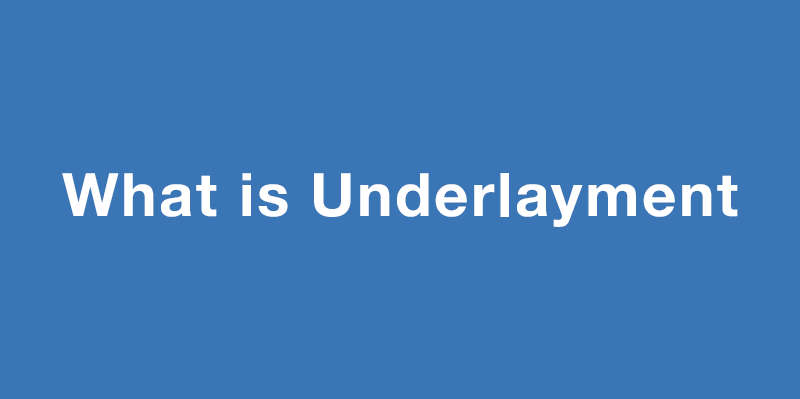What is Underlayment

Underlayment is basically a thin layer of material that is sandwiched between other materials. The underlayment is used in two different industries, roofing and flooring. Both industries have different benefits and in this article we explain why it’s important for the flooring industry and what purpose it provides to flooring consumers.
Flooring Structure Explained
Your flooring plays a vital role of supporting various furniture in your home. Besides from the beautiful floor, other materials such as subfloor, joist and underlayment hold everything in place.
Flooring Joist
The floor joist is the foundation to your flooring. A horizontal structural member used in framing to span an open space, often between beams that subsequently transfer loads to vertical members. When incorporated into a floor framing system, joists serve to provide stiffness to the subfloor sheathing, allowing it to function as a horizontal diaphragm.
Subfloor
The subfloor is the foundation beneath your finish flooring materials. Providing a continuous structural surface over the floor joist. Subfloors can consist of wood plank, plywood, OSB (Oriented Strandboard) and concrete. Concrete is in most basements as no floor joist is present. Concrete basement floors are also susceptible to moisture as moisture can wick up through the concrete.
Flooring Underlayment
Underlay or flooring underlayment is a thin layer of material such as fiber, felt, rubber or foam. The thin layer of material helps cushion, sound absorption, insulation and reduce wear with your flooring. For laminate or engineered wood flooring, it provides a “vapor barrier” to prevent moisture from coming through and damaging your floor. It can also help dampen noise as HOA or condo associations usually refer to sound rating test.
Floor Coverings
This is the surface that a person see’s and walks on. Many different types of floor coverings are available such as laminate, floating engineered, hardwood, ceramic tile, carpet or vinyl.
Floor Underlayment Main Purpose
Sound Reduction or Dampens Noise
Underlayment allows to block sound from transferring from room to room. An underlayment built with recycled fibers absorbs sound and keeps it from traveling to other rooms. Makes click-together floating floors sound solid underfoot.
Moisture Protection – Blocking Harmful Damage To Your Floor
Certain underlayment come with built-in vapor barrier that blocks moisture from getting to your floor. Concrete subfloors is notorious for emitting moisture and causing flooring to be in contact with water and chemicals from concrete.
Compression Resistance
Consistent traffic can lead to dented areas of your flooring. Dense recycled fiber underlayment supports the click-together mechanism and upholds supportive configuration under consistent traffic of overlying floor.
Smooths Subfloor Imperfections
All subfloors are not consistent in levelness. However, underlayment can form to a certain degree around subfloor surface roughness, helps to cut down on extra subfloor surface prepping time.
Insulating Value
Providing additional comfort to the entire home during seasonal temperature changes.
Approved for In-Floor Heating Systems
Allows heat to permeate evenly while helping to protect the floor covering material from thermal shock.
Certified Clean and Safe Indoor Air Quality
Flooring underlayment should not be smelly or give off any weird smells. Always look for some certification for indoor air quality testing done. This protects your family from getting unwanted headaches or sickness.
Competitively Priced
An underlayment shouldn’t break the bank but protect you from moisture and reduce noise.
Underlayment Considerations
It is always best to review your flooring installation instructions to follow what they recommend for underlayment. Some flooring manufacturers don’t call for such material and some do. If you are looking to help reduce noise, consider an underlayment that does sound absorption with moisture protection/management.
Our QuietWalk flooring underlayment is considered by most flooring installers and contractors as the industry standard. QuietWalk offers the main benefits mentioned above to the consumer. If you are a homeowner and still not sure what underlayment to choose for your flooring, give us a call at (402) 379-9695.
Join Our Newsletter
You are about to install your new flooring. As you lay the first plank you realize that
